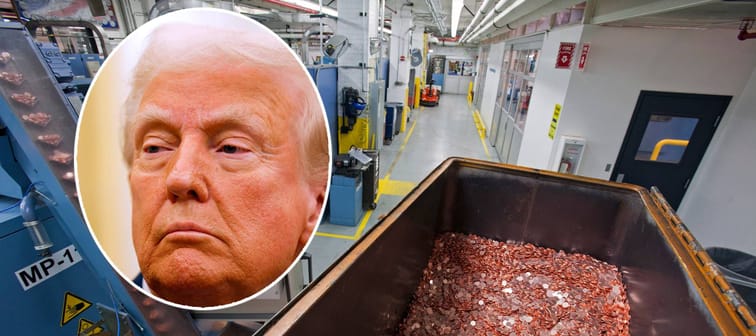Impact on savers
Saving cash and pinching pennies isn’t as common as it used to be, but many Americans — especially seniors and low-income consumers — still like to keep some coins around. The Federal Reserve estimates that a typical household could have $60 to $90 in coins at home.
If you or your grandparents have a stash of pennies, this could be a good time to convert them into digital savings that can earn interest or capital appreciation instead of steadily losing value to inflation.
Dave Ramsey’s plan has people crushing debt fast
Drowning in debt? Dave Ramsey’s viral 7-step method is helping people wipe it out and finally build real savings. No gimmicks—just a clear plan that works. Moneywise breaks it down so you can get started in minutes. If you’re serious about getting ahead, don’t miss this.
See the stepsImpact on collectors
Since the Mint plans to stop producing pennies, the number in circulation will gradually decline. But experts say most pennies aren’t likely to become rare collectibles.
One exception is the 1943 copper Lincoln wheat cent — a famous minting mistake that slipped through during World War II, when copper was supposed to be conserved for the war effort and pennies were made from zinc. According to John Feigenbaum, publisher of the Greysheet Rare Coin Price Guide, these elusive coins have occasionally sold for as much as $1 million at auction.
Still, the odds of finding one in your spare change are incredibly slim. Feigenbaum told USA TODAY it's about as likely as finding a forgotten winning lottery ticket in your junk drawer.
Impact on shoppers
Despite the rise of digital payments, cash and coins remain popular. A recent YouGov poll found that 67% of U.S. adults used cash for at least one transaction in the previous 30 days.
Consumers will still be able to use pennies after production stops. But as they gradually disappear from circulation, the Treasury Department told the Wall Street Journal that businesses will need to adjust. Prices may be rounded up or down to the nearest 5 cents.
That means the days of 99-cent pricing may be numbered. And don’t be surprised if businesses more often round up than down.
Under 60? Lock in life insurance in minutes
Get term life insurance fast—with no agents, no exams, and no stress. Ethos lets you apply online in minutes and get covered for as low as $15/month. It’s affordable peace of mind, without the hassle Get your free quote now








